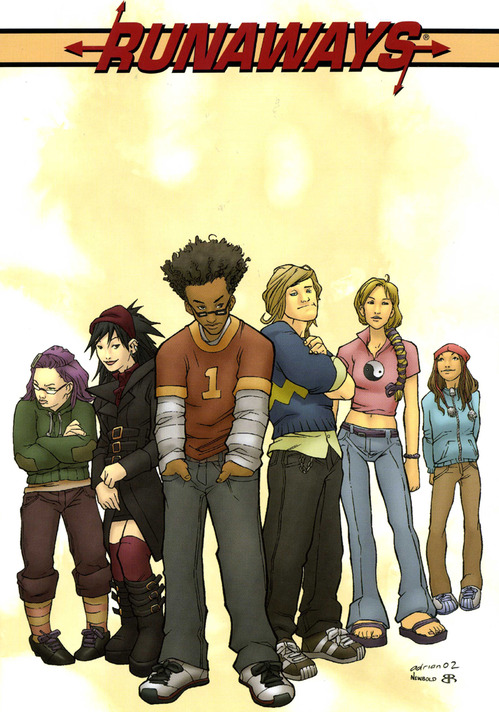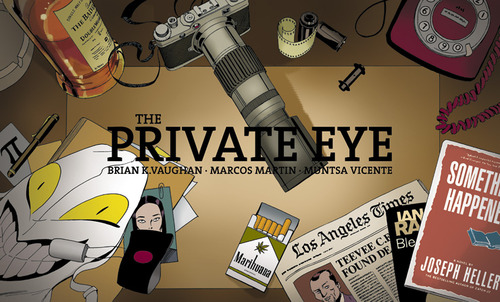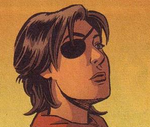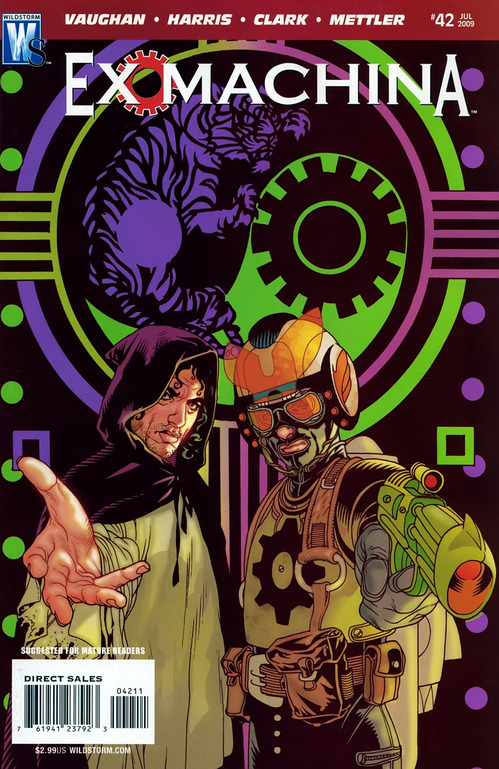Page One, Panel One: How Brian K. Vaughan Builds Epic Stories
Saga art by Fiona Staples Page One, Panel One features in-depth discussions between Van Jensen (The Flash, Pinocchio, Vampire Slayer) and other writers diving into the creative process behind comic books. This week’s conversation features Brian K. Vaughan, who rose to fame with series such as Y: The Last Man, Ex Machina and Runaways. After working in TV on Lost and Under the Dome, Vaughan returned to comics with his acclaimed Image sci-fi series Saga and The Private Eye, a futuristic noir posted on Panel Syndicate, a pay-what-you-will comics site that Vaughan co-created.
Page One, Panel One features in-depth discussions between Van Jensen (The Flash, Pinocchio, Vampire Slayer) and other writers diving into the creative process behind comic books. This week’s conversation features Brian K. Vaughan, who rose to fame with series such as Y: The Last Man, Ex Machina and Runaways. After working in TV on Lost and Under the Dome, Vaughan returned to comics with his acclaimed Image sci-fi series Saga and The Private Eye, a futuristic noir posted on Panel Syndicate, a pay-what-you-will comics site that Vaughan co-created.
As Vaughan is known for series covering several years and dozens of issues, we talked to him about how he builds those long-form narratives, managing the unexpected, parenthood, the insanity of standing desks and drinking too much with Garth Ennis.
![]()
Jensen: I was looking over your body of work, and it’s an interesting mix of both shorter stories and some really long-form series. I’m curious, when you initially have a concept for something, how do you go about deciding how long it will be? What are the things you see that make you think a project has the legs to go for multiple years?
Vaughan: Well, when I pitched Y: The Last Man to Vertigo, I was young and poor and just wanted some job stability, so I suggested that the series should last five years. Ironically, by the time the series reached that point, Vertigo really wanted me to make it longer, but Pia Guerra and I both decided that five years had been just right, the exact length of time it took for Yorick to transform from the last boy on earth to the last man. But now that I’m old and a little more stable, I can afford to let the story dictate the scope upfront. The Private Eye was 10 chapters because that just felt right for a self-contained mystery about the nature of privacy. Saga is really a story about my children, and watching them grow up, so I kind of hope it never ends.
Jensen: Well, now I just want to ask a million questions about how parenthood has affected your writing. I’m resisting, but just barely.
Vaughan: I’ll just say that young children have made it much harder to find the time to write, and much easier to find things to write about.
Jensen: When you’ve decided a series is going to be a long one, or at least you think it will go dozens of issues, what’s your next step? How do you build out the plot? Are there certain questions or templates you use? What tools do you use? Do you like to outline with paper and pen? Or is it all on screen? Or on a whiteboard?
Vaughan: I use the same cheap steno notebooks from Staples I’ve always used. And there are no templates; I just scribble ideas into them as they come. Truthfully, most of it is just in my head these days. I think about stories all day long, and I’ve found that I have a natural filter where the shittier ideas just get forgotten about, but the okay ones tend to linger. I greatly prefer my own insane process over the regimented whiteboard of the television writers’ room, though I completely understand why it’s necessary for that medium.
Jensen: As you go about this, how do you develop the characters? Do you build out a character bible? Do they inform the scope and shape of the story?
Vaughan: No bibles, per se. By the time I see an artist’s first sketch of a character, I feel like I know him or her really well. I usually have a clear idea where I want to take characters, but allow them to pull me in new directions if it feels right. Sorry, I realize most of these answers are probably enormously unhelpful. But after writing comics for almost 20 years, it’s become pretty intuitive. I don’t really understand how it happens, it just kind of does, which is one of the many reasons my professor wife assures me I could never be a teacher.
Jensen: No, it’s really interesting to hear how another writer approaches this stuff! Now that you’re working with Image and publishing online through Panel Syndicate, you’re pretty fully in control of these stories (though obviously your collaborators are very involved). Beyond the art teams, who do you rely on for advice as you’re building the story? Do you hire an editor?
Vaughan: I haven’t worked with an editor in several years. I just like to get as much input from my artistic collaborators as they’re comfortable sharing, and then lock myself in a quiet room until a script comes out.
-

-

-

-

-

-

-

-

-

-

-

-

-

-

-

-

-

-

-

-

-

-

-

-

-

-

-

-

-

-

-

-

-

-

-

-

-

-

-

-














































